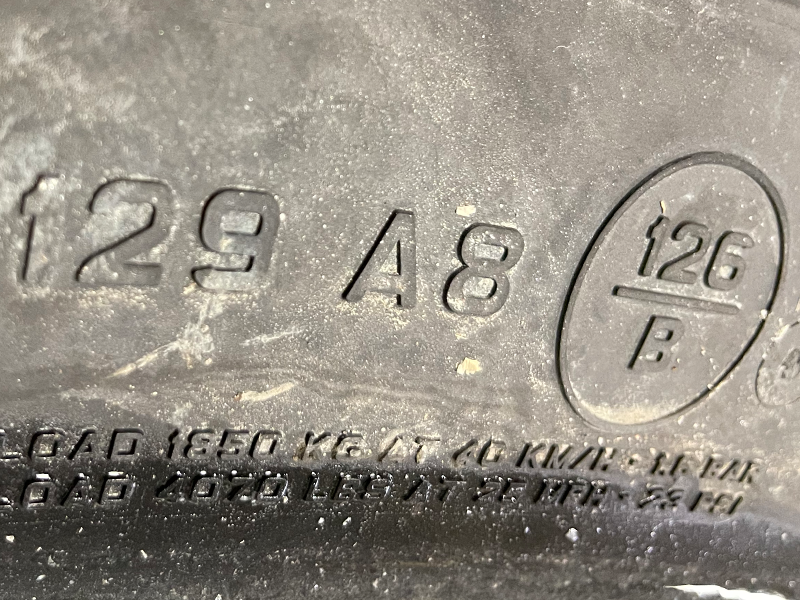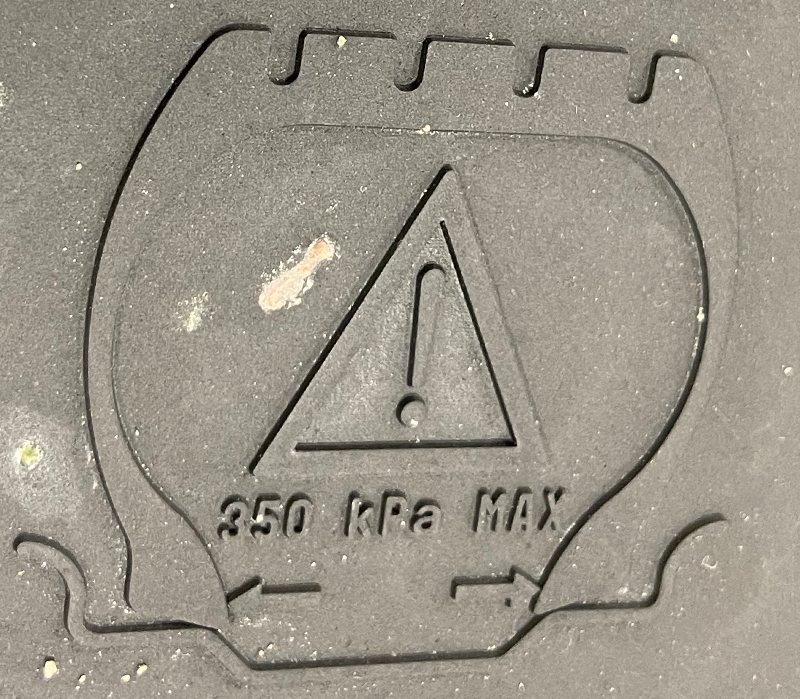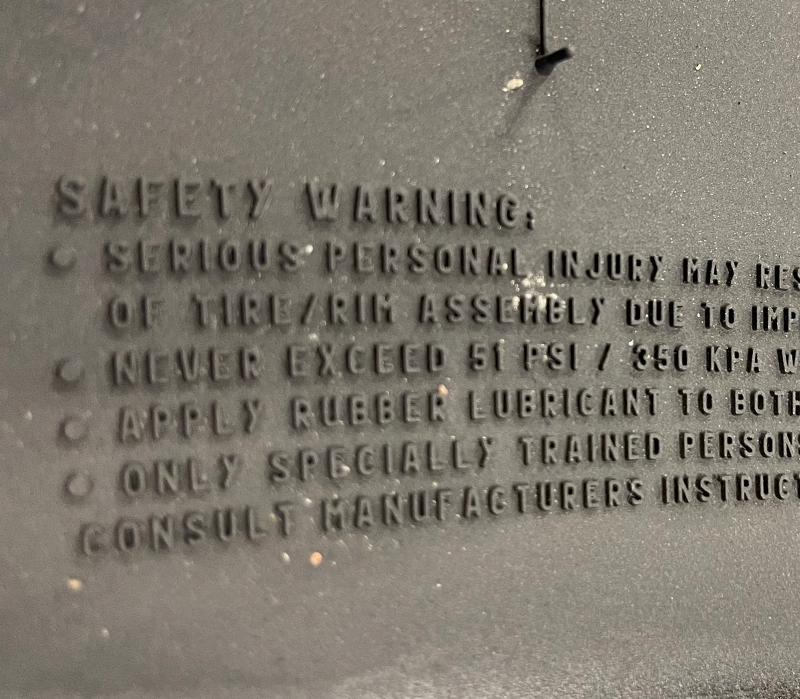As you work with agricultural equipment, your main concern is likely that your equipment operates day in and day out. This includes the tires on which your machinery rests upon. However, have you ever stopped to take a look at your tires?
Located on every tire sidewall is a series of labels that help owners know a number of things from what the proper air inflation pressure is, what speeds you can safely travel, and even what amount of weight you can load. For ag tires, understanding this information is essential for ensuring not only that you are using the best tire for your particular application, but are safely operating your equipment while maximizing the lifespan of your tires. Learning how to read ag tire sidewalls isn’t hard – and can end up saving you time and money.
Read below to learn how to read the five most important pieces of information on an ag tire sidewall.
TreadSure® will help you compare your tires to the full list of tires in the TreadSure® database, and give you insights on the current state of your particular ag tires.
Download the TreadSure® app today and start caring for your agricultural equipment with the power that comes with knowledge and experience!
5 Parts Of A Tire Sidewall You Should Know
1.) Tire Size
On the tire sidewall will be a large set of numbers and letters. This is known as the tire size label.
A tire size label is usually broken down into four pieces of data:
• First Numeric Code: The first set of numbers will give you the tire’s nominal section width. This is measured in inches or millimeters (mm becoming more common in recent years), and is the distance between sidewalls of the tire. This number could also be preceded by letters such as IF, VF, CFO/CHO which designates extra load capacity at the same air pressures or same load carrying capacity at lower air pressures.
• Second Numeric Code: The second set of numbers is the aspect ratio. The aspect ratio tells you the sidewall height of the tire compared to the width. For example a ’70’ means the sidewall is seventy percent of the width of the tire.
• Letter: If a letter – such as “R” – is present in the label, this indicates that the tire features radial construction in its manufacturing and design.
• Third Numeric Code: The final numeric value refers to the rim diameter in inches. This informs you about the size of rim that the tire would fit properly.
You can use a variety of different tire sizes (with the correct wheels, clearance, and tire class [to maintain proper gear ratios]) on most modern day ag equipment. The tire size should be carefully chosen when outfitting your machinery assist with your particular application and machine. Soil types, row crop spacing, soil compaction, wheel slippage, carrying capacity, highway travel, etc… All play a major role when deciding the best tire size.

2.) Speed Rating & Load Index Number
The largest amount of data on your ag tire is a listing of the speed rating and load index number for that particular tire. This information can be confusing to see, but once you know what the two measurements are you can understand your tire even better.
Load Index Number – You will find the load index number listed as a three digit code. This index number tells you carry capacity for that particular tire at it’s proper pressurization and speed. Typically ranging between 118-201 for most modern-day machinery. Dawson Tire and Wheel’s Tire Chart has most common load index markings, and their equivalency in both pounds and kilograms.
Speed Rating – Hand-in-hand with the load index number is the tire’s speed rating. This will give you the maximum speed that the tire is designed to maintain under a load. Ag tires are typically distinguished by a single letter, or one letter and one number; ranging from an ‘A2’ for a slow crawl at 6 mph (10 kph) all the way to a ‘G’ that is rated for 55 mph (90 kph). Many implement tires or passenger vehicle tires posses speed ratings far beyond the ‘G’ rating which seems to be the cap for most farm machinery.

The Speed/ Load Index on an Ag Tire
If an ag tire has a second speed/load rating marked within a circle this indicates that, under a reduced load, the tire is rated to travel at slightly faster speeds. In the example above, the tire’s speed/load index is normally 129/A8, meaning each tire can carry approx. 4,079 lbs at 25 mph (40 kph). The second speed/load index in the circle is 126/B, telling us if we reduced our load to 3,748 per tire, we are then able to increase travel speeds to 30 mph (50 kph).
By combining the load index number and the speed rating of the tire, you can create a performance rating by which you can compare that particular tire with other styles and builds. This can help you know if the tire you are using is the right one for your particular needs and application.
3.) Date Code
Have you ever wondered where and when your ag tire was manufactured? For a bit of extra ag tire trivia, take a look at the alphanumeric code located on one side of your tire’s sidewall.
The date code will give you information on when and where the tire was manufactured. For example, if your tire’s date code begins with the letters “VE”, this means that the tire was made by the Bridgestone/Firestone manufacturer headquartered in Des, Moines, Iowa, United States.
4.) Bead Seating Marker
Located on the tire tread will be a relatively small icon. Known as the “Bead Seating Marker”, this icon represents the inflation pressure that is needed to seat the bead. This is the maximum air pressure you should use to set the bead. It is critical this is not confused with the air pressure needed to run the tire at maximum efficiency.
Operating air inflation pressure should be set depending upon load carried, speed, soil type, and other factors.

5.) Tire Safety Warning
Finally, your ag tire tread will have a section of safety warnings included. Typically located near the size indicator and load index number, the safety warning can be easily seen with the large SAFETY WARNING text capitalized on the tread.
The tire safety warning will offer important safety information about your particular tire. This information may be easy to ignore, but taking the time to read the safety warning will help you avoid potential issues and injury that can come with improper use of the tire or unexpected accidents. Take note of any unique warnings listed in the safety warning.

Care For Your Ag Tires Better With TreadSure®
Learning how to properly read your ag equipment’s tire can save you time and money as you understand the right way to care for your equipment. As you learn the proper carrying load, speed, and pressure that your specific tires require, you can better maintain your equipment and keep your operations efficient.
Once you know the information on your tire sidewalls, the next step is to know how to use that information to your advantage. To take your tire care to the next level, check out the TreadSure® mobile app. Simply use your new sidewall-reading knowledge to check each of your tires and mark down the correct information in your TreadSure® app.
TreadSure® will help you compare your tires to the full list of tires in the TreadSure® database, and give you insights on the current state of your particular ag tires.
Download the TreadSure® app today and start caring for your agricultural equipment with the power that comes with knowledge and experience!
